

COURSE
: Medical Microbiology, MBIM 650/720 - Fall 1999TOPIC: Immunoglobulins: Ag-Ab Reactions Lecture # 8
Tests for Antigen-Antibody Reactions Lecture # 9
FACULTY: Dr. Mayer
Email: MAYER@MED.SC.EDU
TEACHING OBJECTIVES:
1. To describe the nature of Ag-Ab reactions
2. To compare and contrast antibody affinity and avidity
3. To delineate the basis for antibody specificity and cross reactivity
4. To discuss the principles of commonly used tests for antigen/antibody reactions
REQUIRED READING:
Roitt et al. Immunology, 5th Ed., pp 107-113, Chpt. 29
KEY WORDS:
Affinity, Avidity, Specificity, Cross reactivity, Agglutination, Hemagglutination, Agglutinin, Titer, Prozone, Passive hemagglutination, Direct Coomb's test, Indirect Coomb's test, Hemagglutination inhibition, Precipitin, Equivalence point, Equivalence zone, Zone of antibody excess, Zone of antigen excess, Ouchterlony, Line of identity, Line of nonidentity, Line of partial identity, Radial immunodiffusion, Immunoelectrophoresis, Rocket immunoelectrophoresis, Countercurrent immunoelectrophoresis, Radioimmunoassay, Enzyme linked immunosorbent assay, Competitive RIA/ELISA, Noncompetitive RIA/ELISA, Western blotting, Immunofluorescence, Immunoenzyme staining, Immunoelectron microscopy, Complement fixation
IMMUNOGLOBULINS: AG-AB REACTIONS
I. NATURE OF AG-AB REACTIONS
A. Lock and Key Concept - The combining site of an antibody is located in the Fab portion of the molecule and is constructed from the hypervariable regions of the heavy and light chains. X-Ray crystallography studies of antigens and antibodies interacting shows that the antigenic determinant nestles in a cleft formed by the combining site of the antibody as illustrated in Figure 1. Thus, our concept of Ag-Ab reactions is one of a key (i.e. the Ag) which fits into a lock (i.e. the Ab).
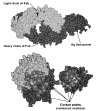 Fig
1 (source Roitt et al., Immunology, 5th ed Fig 9-5)
Fig
1 (source Roitt et al., Immunology, 5th ed Fig 9-5)
B. Non-covalent Bonds - The bonds that hold the Ag in the antibody combining site are all non-covalent in nature. These include hydrogen bonds, electrostatic bonds, Van der Waals forces and hydrophobic bonds. Multiple bonding between the Ag and the Ab ensures that the Ag will be bound tightly to the Ab.
C. Reversible - Since Ag-Ab reactions occur via non-covalent bonds they are by their nature reversible.
II. AFFINITY AND AVIDITY

A. Affinity - Antibody affinity is the strength of the
reaction between a single antigenic determinant and a single combining site on
the antibody. It is the sum of the attractive and repulsive forces operating
between the antigenic determinant and the combining site of the antibody as
illustrated in Figure 2.
(Fig 2 Source: Roitt et al., Immunology, 5th ed Fig 9-5)
Affinity is the equilibrium constant that describes the Ag-Ab reaction as illustrated in Figure 3. Most antibodies have a high affinity for their antigens. (Fig 3 Source Roitt et al., Immunology 5th ed Fig 9-6)

B. Avidity - Avidity is a measure of the overall
strength of binding of an antigen with many antigenic determinants and
multivalent antibodies. Affinity refers to the strength of binding between a
single antigenic determinant and an individual antibody combining site whereas
avidity refers to the overall strength of binding between multivalent Ag's and
Ab's. Avidity is influenced by both the valence of the antibody and the valence
of the antigen. Avidity is more than the sum of the individual affinities. This
is illustrated in Figure 4.
(Fig 4 Source Roitt et al., Immunology 5th ed Fig 9-7)

III. SPECIFICITY AND CROSS REACTIVITY
A. Specificity - Specificity refers to the ability of an individual antibody combining site to react with only one antigenic determinant or the ability of a population of antibody molecules to react with only one antigen. In general, there is a high degree of specificity in Ag-Ab reactions. Antibodies can distinguish differences in 1) the primary structure of an antigen, 2) isomeric forms of an antigen, and 3) secondary and tertiary structure of an antigen.
B. Cross reactivity - Cross reactivity refers to the ability of an individual antibody combining site to react with more than one antigenic determinant or the ability of a population of antibody molecules to react with more than one antigen. Figure 5 illustrates how cross reaction can arise. Cross reactions arise because the cross reacting antigen shares an epitope in common with the immunizing antigen or because it has an epitope which is structurally similar to one on the immunizing antigen (multispecificity).
 (Fig 5 Source Roitt et al., Immunology 5th ed Fig 9-8)
(Fig 5 Source Roitt et al., Immunology 5th ed Fig 9-8)
IV. TESTS FOR ANTIGEN-ANTIBODY REACTIONS
A. Factors affecting measurement of Ag/Ab reactions - The only way that one knows that an antigen-antibody reaction has occurred is to have some means of directly or indirectly detecting the complexes formed between the antigen and antibody. The ease with which on can detect antigen-antibody reactions will depend on a number of factors.
1. Affinity - The higher the affinity of the antibody for the antigen, the more stable will be the interaction. Thus, the ease with which one can detect the interaction is enhanced.
2. Avidity - Reactions between multivalent antigens and multivalent antibodies are more stable and thus easier to detect.
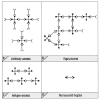
3. Ag:Ab ratio - The ratio between the antigen and antibody influences the detection of Ag/Ab complexes because the sizes of the complexes formed is related to the concentration of the antigen and antibody. This is depicted in Figure 6. (Fig 6 Source Roitt et al., Essential Immunology 8th ed Fig 6-3)
4. Physical form of the antigen - The physical form of the antigen influences how one detects its reaction with an antibody. If the antigen is a particulate, one generally looks for agglutination of the antigen by the antibody. If the antigen is soluble one generally looks for the precipitation of the antigen after the production of large insoluble Ag/Ab complexes.
B. Agglutination Tests
1. Agglutination/Hemagglutination - When the antigen is particulate the reaction of an antibody with the antigen can be detected by agglutination (clumping) of the antigen. When the antigen is an erythrocyte the term hemagglutination is used. The term agglutinin is used to describe antibodies that agglutinate particulate antigens. When the antigen is an erythrocyte the term hemagglutinin is often used. All antibodies can theoretically agglutinate particulate antigens but IgM due to its high valence is particularly good agglutinin and one sometimes infers that an antibody may be of the IgM class if it is a good agglutinating antibody.
a) Qualitative agglutination test - Agglutination tests can be used in a qualitative manner to assay for the presence of an antigen or an antibody.
e.g. A patients red blood cells mixed with antibody to a blood group antigen to determine a persons blood type.
e.g. A patients serum mixed with red blood cells of known blood type to assay for the presence of antibodies to that blood type in the patient's serum.
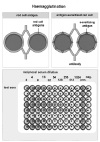
b) Quantitative agglutination test - Agglutination tests can also be used to quantitate the level of antibodies to particulate antigens. In this test one makes serial dilutions of a sample to be tested for antibody and then adds a fixed number of red blood cells or bacteria or other such particulate antigen and determines the maximum dilution which gives agglutination. The maximum dilution that gives visible agglutination is called the titer. The results are reported as the reciprocal of the maximal dilution that gives visible agglutination. Figure 7 illustrates a quantitative hemagglutination test.
(Fig 7 Source Source Roitt et al., Immunology 5th ed Fig 29-6)
Prozone effect - On occasion one observes that when the concentration of antibody is high (i.e. lower dilutions) there is no agglutination and then as the sample is diluted agglutination occurs. The lack of agglutination at high concentrations of antibodies is called the prozone effect. Lack of agglutination in the prozone is due to antibody excess resulting in very small complexes which do not clump to form visible agglutination.
c) Applications of agglutination tests
1) Determination of blood types or antibodies to blood group antigens.
2) To assess bacterial infections
e.g. A rise in titer to a particular bacteria indicates an infection with that bacteria. N.B. a fourfold rise in titer is generally taken as a significant rise in antibody titer.
d) Practical considerations - Although the test is easy to
perform, it is only semi-quantitative.
2. Passive hemagglutination - The agglutination test only works with particulate antigens. However, it is possible to coat erythrocytes with a soluble antigen (e.g. viral antigen, a polysaccharide or a hapten) and used the coated red blood cells in an agglutination test for antibody to the soluble antigen. This is called passive hemagglutination. The test is performed just like the agglutination test. Applications include detection of antibodies to soluble antigens and detection of antibodies to viral antigens.
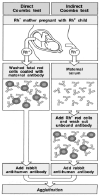
3. Coombs Test (Antiglobulin Test)
a) Direct Coombs Test - When antibodies bind to erythrocytes, they do not always result in agglutination. This can result from the Ag/Ab ratio being in antigen excess or antibody excess or in some cases electrical charges on the red blood cells preventing the effective cross linking of the cells. These antibodies that bind to but do not cause agglutination of red blood cells are sometimes refereed to as incomplete antibodies. In know way is this meant to indicate that the antibodies are different in their structure, although this was once thought to be true. Rather it is functional definition only. In order to detect the presence of non-agglutinating antibodies on red blood cells, one simply adds a second antibody directed against the immunoglobulin (Ab) coating the red cells. This anti-immunoglobulin can now cross link the red blood cells and result in agglutination. This test is illustrated in Figure 8 and is known as the Direct Coombs test.
b) Indirect Coombs Test - If it is necessary to know whether a serum sample has antibodies directed against a particular red blood cell and you want to be sure that you also detect potential non agglutinating antibodies in the sample, an Indirect Coombs test is performed (Figure 8). This test is done by incubating the red blood cells with the serum sample, washing out any unbound antibodies and then adding a second anti-immunoglobulin reagent to cross link the cells. (Fig 8 Source: Janaway et al., Immunobiology 4th ed Fig 2-10)
c) Applications include detection of anti-Rh antibodies. Antibodies to the Rh factor generally do not agglutinate red blood cells. Thus, red cells from Rh+ children born to Rh- mothers, who have anti-Rh antibodies, may be coated with these antibodies. To check for this a direct Coombs test is performed. To see if the mother has anti-Rh antibodies in her serum an Indirect Coombs test is performed.

4. Hemagglutination Inhibition - The agglutination test can be modified to be used for the measurement of soluble antigens. This test is called hemagglutination inhibition. It is called hemagglutination inhibition because one measures the ability of soluble antigen to inhibit the agglutination of antigen-coated red blood cells by antibodies. In this test a fixed amount of antibodies to the antigen in question is mixed with a fixed amount of red blood cells coated with the antigen (see passive hemagglutination above). Also included in the mixture are different amounts of the sample to be analyzed for the presence of the antigen. If the sample contains the antigen, the soluble antigen will compete with the antigen coated on the RBC for binding to the antibodies, thereby inhibiting the agglutination of the RBC as illustrated in Figure 9.
(Fig 9 Source: Hood et al., Immunology 2nd ed Fig 3-12)
By serially diluting the sample, you can quantitate the amount of antigen in your unknown sample by its titer. This test is generally used to quantitate soluble antigens and is subject to the same practical considerations as the agglutination test.

C. Precipitation tests
1. Theoretical considerations - When antibodies are mixed with soluble antigens at an appropriate ratio, the Ag/Ab complexes will be sufficiently cross-linked to result in precipitation of the complexes from solution. If the amount of precipitate formed at different Ag:Ab ratio's is measured, the curve depicted in Figure 10 will be produced. (Fig 10 Source: Roitt et al., Immunology 5th ed Fig 29-1)
If the presence of free antibody and free antigen is measured at each point, a zone is reached at which there is no free antibody or free antigen. This is called the equivalence zone. On one side of the equivalence zone there is a region where antibody is in excess (zone of antibody excess). On the other side of the equivalence zone there is a region of antigen excess (zone of antigen excess). In the zones of antigen and antibody excess there are also small soluble immune complexes formed as shown in Figure 6.
By measuring the amount of precipitate formed in the equivalence zone, one can measure the amount of antigen (if the amount of antibody is held constant) or antibody (if the amount of antigen is held constant). In practice these types of assays are not employed anymore. Rather, precipitation assays are done in agar gels. The theory however, is the same whether the assay is done in liquid or in agar gels.
2. Precipitation in Gels
a) Ouchterlony (Double diffusion in agar)
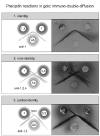
In an Ouchterlony test antigen is placed in a one hole punched in an agar gel and antibody is placed in another hole. As the antigen and antibody diffuse into the agar they interact. Where the equivalence zone is reached a precipitate is formed which appears as a white line in the agar gel. By placing the antibodies in a center well and various antigens in well surrounding the antibody well, it is possible to obtain information concerning the composition of epitopes on antigens or the composition of the antibodies as illustrated in Figure 11. (Fig 11 Source Roitt et al., Immunology 5th ed Fig 29-2)
Lines of Identity are formed when the two antigens share a common determinant that is reacting with the antibody. Alternatively, a line of identity could be formed when a complex mixture of antigens in the wells share one antigen that is reacting with the antibody.
Lines of Nonidentity are formed when there is nothing in common between the antigens in the wells. The two extensions on the lines are called spurs.

Lines of Partial Identity are formed when the antigens have something in common but one antigens has something that is not present in the other. The antigen that gives rise to the line that has the spur is the one that has the extra determinant.
An explanation for how lines of identity, non-identity and partial identity form is illustrated in Figure 12. (Fig 12 Source: Kuby, Immunology 2nd ed. Fig 6-8)

The Ouchterlony test is a qualitative test that is used to analyze the components in mixtures of antigens or antibodies. Simply by looking for lines of identity, nonidentity and partial identity and by seeing how many lines form between antigens and antibodies one can get information concerning the composition and size of antigens or antibodies. This is only a crude test for size determination.

b) Radial Immunodiffusion (Mancini) - In radial immunodiffusion antibody is incorporated into the agar gel as it is poured and different dilutions of the antigen are placed in holes punched into the agar. As the antigen diffuses into the gel it reacts with the antibody and when the equivalence point is reached a ring of precipitation is formed as illustrated in Figure 13. (Fig 13 Source Roitt et al., Immunology 5th ed Fig 29-4)
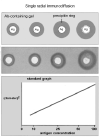
The diameter of the ring is proportional to the log of the concentration of antigen since the amount of antibody is constant. Thus, by running different concentrations of a standard antigen one can generate a standard cure from which one can quantitate the amount of an antigen in an unknown sample. Thus, this is a quantitative test. If more than one ring appears in the test, more than one antigen/antibody reaction has occurred. This could be due to a mixture of antigens or antibodies. This test is commonly used in the clinical laboratory for the determination of immunoglobulin levels in patient samples.
3. Precipitation coupled with Electrophoresis - Although Ouchterlony analysis can be helpful in analyzing the composition of antigens, when a complex mixture of antigens is employed it is often very difficult to determine the number of different precipitation lines in the test. Also, while radial immunodiffusion is a good method for quantitation of antigens it is relative slow in that it may take up to a day to get the results. Thus, additional tests that are based on electrophoresis and precipitation have been developed.
a) Immunoelectrophoresis - In immunoelectrophoresis a complex mixture of antigens is placed in a well punched out of an agar gel and the antigens are electrophoresed so that the antigen are separated according to their charge. After electrophoresis a trough is cut in the gel and antibodies are added. As the antibodies diffuse into the agar, precipitin lines are produced in the equivalence zone when an Ag/Ab reaction occurs as illustrated in Figure 14. (Fig 14 Source Roitt et al., Immunology 5th ed Fig 29-3)
This tests is used for the qualitative analysis of complex
mixtures of antigens, although a crude measure of quantity (thickness of the
line) can be obtained. This test is commonly used for the analysis of components
in a patient' serum. Serum is placed in the well and antibody to whole serum in
the trough. By comparisons to normal serum one can determine whether there are
deficiencies on one or more serum components or whether there is an
overabundance of some serum component (thickness of the line). This test can
also be used to evaluate purity of isolated serum proteins.![]()
(Fig 15 Source Roitt et al., Immunology 5th ed Fig 29-5)
c) Rocket Electrophoresis - In this test antigen is placed in wells punched out of an agar gel to which antibody has been incorporated and the antigen is electrophoresed into the gel. Precipitin arcs are produced as illustrated in Figure 15. (N.B. The test is done at a pH at which the antibody molecules do not move appreciably.)
The height of the arc (rocket) is proportional to the concentration of the antigen, since when the concentration of antigen is low it will be all immobilized by the antibody before it moves to far. In contrast when the amount of antigen is high, it will move farther before it is all tied up with antibody. In this test one generates a standard curve using known concentrations of antigen and from this curve calculates the concentration in an unknown sample. This test in quantitative and is faster than radial immunodiffusion. It is commonly used for the quantitation of various serum proteins.
d) Countercurrent electrophoresis - In this test the antigen and antibody are placed in wells punched out of an agar gel and the antigen and antibody are electrophoresed into each other where they form a precipitation line as illustrated in Figure 15. This test only works if conditions can be found where the antigen and antibody have opposite charges. This test is primarily qualitative, although from the thickness of the band you can get some measure of quantity. It's major advantage is it's speed.
D. Radioimmunoassay (RIA)/Enzyme Linked Immunosorbent Assay (ELISA)
Radioimmunoassays (RIA) are assays which are based on the measurement of radioactivity associated with immune complexes. In any particular test, the label may be on either the antigen or the antibody. Enzyme Linked Immunosorbent assays (ELISA) are those that are based on the measurement of an enzymatic reaction associated with immune complexes. In any particular assay the enzyme may be linked to either the antigen or the antibody.
1. Competitive RIA/ELISA for Ag Detection - The method and principle of RIA and ELISA for the measurement of antigen is shown in Figure 16. By using known amounts of a standard unlabeled antigen one can generate a standard curve relating cpm (Enzyme) bound vs amount of antigen. From this standard curve one can determine the amount of an antigen in an unknown sample.
 (Fig 16 Source: Barrett, Immunology 4th ed Fig 14-1)
(Fig 16 Source: Barrett, Immunology 4th ed Fig 14-1)
The key to the assay is the separation of the immune complexes from the remainder of the components. This has been accomplished in many different ways and serves as the basis for the names given to the assay:
1) Precipitation with ammonium sulphate - Ammonium sulphate (33-50% final concentration) will precipitate immunoglobulins but not many antigen. Thus, this can be used to separate the immune complexes from free antigen. This has been called the Farr Technique
2) Anti-immunoglobulin antibody - The addition of a second antibody directed against the first antibody can result in the precipitation of the immune complexes and thus the separation of the complexes from free antigen.
3) Immobilization of the Antibody - The antibody can be immobilized onto the surface of a plastic bead or coated onto the surface of a plastic plate and thus the immune complexes can easily be separated from the other components by simply washing the beads or plate. This is the most common method used today and is referred to as Solid phase RIA or ELISA.
In the clinical laboratory competitive RIA and ELISA are commonly used to quantitate serum proteins, hormones, drugs metabolites.
2. Noncompetitive RIA/ELISA for Ag or Ab - Noncompetitive RIA and ELISA assays are also used for the measurement of antigens and antibodies. Examples of a solid phase assays for antibody and antigen are given in Figure 17.
In Figure 17A the bead is coated with the antigen and is used for the detection of antibody in the unknown sample. The amount of labeled second antibody bound is related to the amount of antibody in the unknown sample. This assay is commonly employed for the measurement of antibodies of the IgE class directed against particular allergens by using a known allergen as antigen and anti-IgE antibodies as the labeled reagent. It is called the RAST test (radioallergosorbent test).
In Figure 17B the bead is coated with antibody and is used to measure an unknown antigen. The amount of labeled second antibody that binds is proportional to the amount of antigen that bound to the first antibody.
(Fig 17 Source Bellanti, Immunology III Fig 8-6)
E. Western Blotting
Western blotting is a relatively new technique in which a complex mixture of antigens are separated by electrophoresis and the separated antigen are transferred (blotted) onto some support, usually nylon or cellulose nitrate. The support is then incubated with a radioactive or enzyme-labeled antibody and the binding of the antibody is visualized by autoradiography (radioactive Ab) or the production of an insoluble enzyme reaction product (enzyme labeled Ab). Western blotting is used for analyzing and characterizing complex mixtures of antigens or antibodies.
This test is one of the tests employed in the detection of anti-HIV antibodies as evidence of HIV infection. Blots of HIV antigens separated by electrophoresis are incubated with a patients serum and unbound immunoglobulins are removed by washing. The blots are then incubated with enzyme labeled anti-human immunoglobulin antibodies and the reaction visualized by the production of an insoluble reaction product of the enzyme. This allows one to detect antibodies to various antigenic components of the virus. This test is qualitative although with proper precautions it is possible to relatively quantitate the amount of antigen present in a sample
F. Tests for Cell Associated Antigens
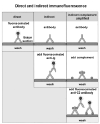
1. Immunofluorescence - Immunofluorescence is a technique whereby an antibody labeled with a fluorescent molecule (fluorescein or rhodamine) is used to detect the presence of an antigen in or on a cell or tissue by the fluorescence emitted by the bound antibody as illustrated in Figure 18. (fig 18 Source Roitt et al., Immunology 5th ed Fig 29-8)
a) Direct Immunofluorescence - In direct immunofluorescence the antibody specific to the antigen is directly tagged with the fluorochrome.
b) Indirect Immunofluorescence - In indirect immunofluorescence the antibody specific for the antigen is unlabeled and a second anti-immunoglobulin antibody directed toward the first antibody is tagged with the fluorochrome. Indirect fluorescence is more sensitive than direct immunofluorescence since there is amplification of the signal.
2. Immunoenzmye staining - Immunoenzyme staining is similar to immunofluorescence except that instead of a fluorescent tag on the antibody an enzyme labeled antibody is used. The binding of the antibody is visualized by the formation of a insoluble reaction product of the enzyme after incubation with a suitable substrate. Both direct and indirect techniques can be employed. Peroxidase is a commonly used enzyme because there is good substrate that gives an insoluble reaction product. In this case the assay is refereed to as immunoperoxidase staining.
3. Immunoelectron microscopy - Antibodies labeled with an electron dense molecule like ferritin or gold can be used in conjunction with the electron microscope for fine structure localization of antigens.
G. Complement Fixation - Antigen/Antibody complexes can also be measured by their ability to fix complement because an Ag/Ab complex will "consume" complement if it is present whereas free Ag's or Ab's do not. Tests for Ag/Ab complexes that rely on the consumption of complement are termed complement fixation tests and are used to quantitate Ag/Ab reactions. This test will only work with complement fixing antibodies (IgG, IgM best).
(Fig 19 Source Roitt et al., Immunology 5th ed Fig 29-7)
The principle of the complement fixation test is illustrated in Figure 19. Antigen is mixed with the test serum to be assayed for antibody and Ag/Ab complexes are allowed to form. A control tube in which no test serum is added is also prepared. If no Ag/Ab complexes are present in the tube, none of the complement will be fixed. However, if Ag/Ab complexes are present, they will fix complement and thereby reduce the amount of complement in the tube. After allowing for complement fixation by any Ag/Ab complexes, a standard amount of red blood cells, which have been pre-coated with anti-erythrocyte antibodies is added. The amount of antibody-coated RBC is predetermine to be just enough to completely use up all the complement initially added if it were still there. If all the complement was still present (i.e. no Ag/Ab complexes formed between the Ag and Ab in question), all the RBC will be lysed. If Ag/Ab complexes are formed between that Ag and Ab in question, some of the complement will be consumed and thus when the antibody-coated RBC's are added not all of them will lyse. By simply measuring the amount of RBC lysis by measuring the release of hemoglobin into the medium, one can indirectly quantitate Ag/Ab complexes in the tube. Complement fixation tests are most commonly used to assay for antibody in a test sample but they can be modified to measure antigen.
H. Relative sensitivities of Ag/Ab tests (Figure 20)
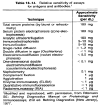
Fig 20 Source Stites et al., Basic and Clinical Immunology, 7th ed Table 18-14
Return to the Department of Microbiology and Immunology Site Guide
This page copyright 1998, The Board of Trustees of the University of South Carolina
This page last changed on Thursday, November 18, 1999
Page maintained by Richard Hunt
URL: http://www.med.sc.edu:85/411.htm
Please report any problems to rhunt@med.sc.edu